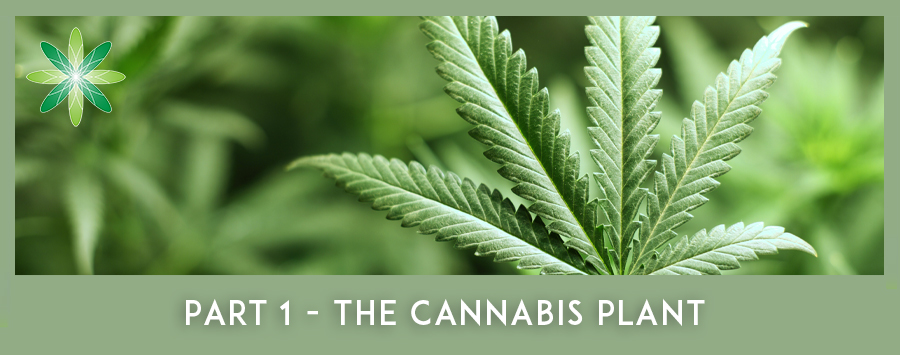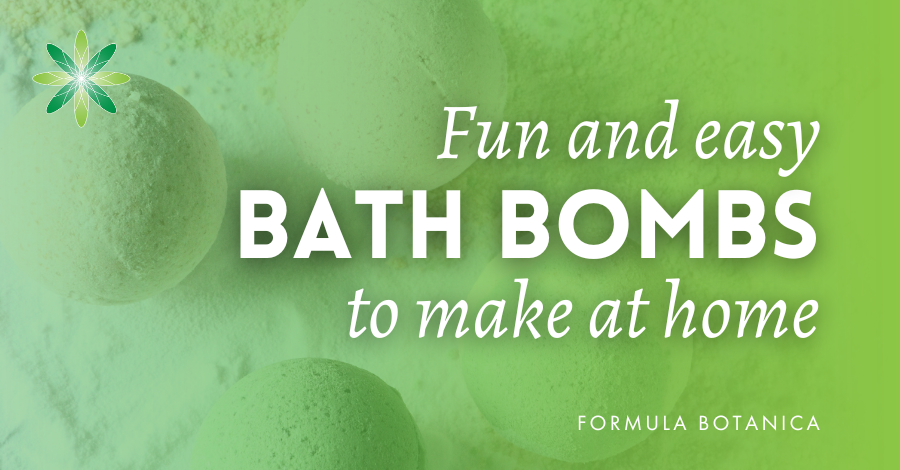CBD skincare, or Cannabidiol skincare, is gaining considerable attention as a trendy ingredient in cosmetic products, and many skincare formulators are enticed to add this ingredient into their formulations. However, as CBD is extracted from the Cannabis plant, it is often a source of controversy and questions. We created the formulator’s guide to take you through the ingredient’s chemistry and the claimed benefits of CBD skincare as well as give you formulation tips to work with this ingredient.
CBD was first isolated in 1940 and its structure was determined in 1963. However, Cannabis is an important folklore medicinal plant, used for centuries by many cultures throughout recorded history. Cannabis has a long history of use to alleviate skin symptoms, with preparations identified in ancient medical literature dating back to Dioscorides. Cannabis was often mixed with fats and applied as a poultice to the skin for its antibacterial and anti-inflammatory activity. Despite any controversies, the cosmetic market is experiencing a tremendous development in products containing CBD, with a promising, continuous growth over the next years.
CBD skincare products have become increasingly popular for people with sleep disorders, anxiety, and chronic pain, and the range of products where the ingredient is added include both oral and topic applications. Cosmetics are no exception to this expansion, and CBD is making its way through high performance cosmetics and products for caring of sensitive and acne-prone skin.
We are now going to explore CBD, its chemistry, properties and usage in cosmetic products:
The Cannabis plant
Cannabis is a genus of flowering plants in the family Cannabaceae. There’s a debate on the taxonomy of Cannabis, and depending on the taxonomical classification adopted, the genus include 3 species: Cannabis sativa, Cannabis indica, and Cannabis ruderalis.
Cannabis is probably indigenous to the Asiatic Continent and has a very long history of domestication, due to the large spectrum of possible utilisations, as a source of textile fibers, as well as medicinal and psychoactive compounds.
Cannabis is also referred to as hemp and marijuana. The defining characteristic between the two is based on a single factor — the amount of THC in the plant. “Hemp” is a term used to classify varieties of Cannabis that contain 0.3% or less THC content by dry weight, while “Marijuana” is a term used to classify varieties of Cannabis that contain more than 0.3% THC. Technically, CBD can be obtained from both plants.
How is CBD obtained?
There are a number of ways of extracting CBD from Cannabis, and they will usually vary according to the THC content, which can be separated from the extract.
The three main extraction methods for CBD are carbon dioxide extraction, steam distillation, and solvent extraction, and the extracts are made from the flowers, leaves, and stalks of the plant.
You will probably find the terms full or broad spectrum and isolate when searching for CBD. Although none of these terms are legally regulated, their meaning is:
The science of Cannabinoids – What are they and how do they work?
Cannabinoids are a group of pharmacologically active compounds. They can be classified as:
CBD is one of nearly 100 different cannabinoids and the major non-psychotropic/non-intoxicating cannabinoid found in Cannabis and has enormous therapeutic potential. Another important and widely known compound in Cannabis is Delta(9)-tetrahydrocannabinol or THC, a psychoactive compound with hallucinogenic effects. THC is one of the main reasons behind the taboos involved with this theme, as CBD products may or may not contain THC traces according to their extraction.
How does CBD skincare work?
Our Endocannabinoid system is composed by 2 types of cannabinoid receptors, CB1 and CB2, and both are present in the skin, distributed through keratinocytes, melanocytes, in hair follicles and sebaceous and sweat glands. In simple terms, this means that the Cannabidiol that is applied to the skin can potentially connect with the receptors regulating certain skin physiological processes. However, although studies have demonstrated a range of effects for topical application, more conclusive clinical data is needed to confirm these results. The main functions attributed to CBD in skincare are as an antioxidant and anti-inflammatory.
The role of the Endocannabinoid system on immune regulation, supports its local therapeutic effects in the skin, as this system is involved in cutaneous function by regulating, among others; cell growth, differentiation and survival, immune and inflammatory responses. Therefore the disruption of the endocannabinoid system could be involved in skin diseases.
The mechanism of action for the benefits of CBD in topical usage has not yet fully been explained, but its hypothesis involves regulations on sebocyte proliferation, control of sebum production, anti-inflammatory and antiproliferative (inhibits cell growth) activity. Medical literature has shown some evidence of a role for CBD in the management of symptoms of skin conditions like psoriasis, eczema, pruritus, allergic contact dermatitis, atopic dermatitis and acne, by relieving chronic pain, modifying the itching sensation, and reducing inflammation.
Studies show that it may inhibit proliferation of epidermal keratinocytes and to stimulate apoptosis (cell death), cause a reduction of histamine responses in human skin, and there have been studies documenting its use in treating inflammatory acne vulgaris because of its ability to decrease proliferation of human sebocytes in vitro.
Read more – How Cannabinoids work in skincare
CBD in skincare
CBD’s activities described above are valuable for the cosmetic formulator, as they are applicable for a wide range of cosmetic products. Anti-inflammatory and antioxidant actions are both pillars for anti-ageing products, whilst the anti-inflammatory action added to the sebum regulation are relevant for cosmetics intended for acne prone skin. Conditions like eczema and dermatitis will benefit from pain relief and regulation of epidermal proliferation.
Learn all about the science behind CBD in Skincare #CBD #beautytrends #cbdskincare #cannabidiol Share on XThese are the most frequent applications for CBD in skincare:
However, despite its potential, there is still minimal clinical data available to support these claims, and further research to prove CBD efficacy remains necessary.
Formulation Tips
From full-spectrum to isolate, CBD extracts are oil-soluble, and you should add it to the oil phase of your product. The ingredient will work well in products such as balms, massage bars, lip balms, oils, creams, emulsions and serums.
There is no consensus of the CBD dosage for topical application so far, and the effective concentration to obtain the activities reported in literature is yet to be defined. You will find cosmetic products that mention the CBD content in milligrams while some products will mention a percentage instead, both measurements are OK and can be converted to each other easily; They represent how much CBD you would be using with that product.
The most common recommendation to CBD concentration in skincare is around 1%, but concentrations can widely vary, and in order to find an effective concentration to deliver the activities mentioned in literature, it would be necessary to conduct studies to evaluate the concentration and results.
We recommend that CBD is added in the cool down phase, bellow 40C. If you are using a powder form, you can disperse it in a portion of your oil phase.
You will find CBD extracts most likely diluted with hemp seed oil, olive oil, or other types of carrier oils. Check the INCI name to know what were the other components used in your ingredient.
It is important to notice that CBD oil and hemp seed oil are not the same. Hemp seed oil is extracted from the seeds of the hemp plant, and it contains very little or no CBD content (around 0.0025%). When searching for the ingredient, make sure it has cannabidiol in the INCI name.
Cosmetic Regulations
Any formulator working with CBD should be aware of current regulatory concerns and the limited available evidence for cosmetic usage. Several countries have already modified their national controls to accommodate CBD as a medicinal product, however cosmetic regulations are changing and shifting legalities worldwide, and if you are interested in working with CBD you will need to thoroughly research the laws that apply to your region to find the legal status of CBD in skincare in the places where you intend to sell. The FDA in the US, has issued warning letters to CBD based brands for the last several years and these increased significantly in 2019.
Most of the places that allow the use of CBD oil have restrictions that require the oil to have little to no THC, so it is important to request the certificates of analysis when you are buying CBD.
Currently, research on Cannabis phytochemicals and their therapeutic has been limited mostly due these legality issues, hence, current data is limited regarding its safety and efficacy. A better regulation of CBD and additional research will bring forward the advances and its use in a wider way, including for the cosmetic industry, giving traction for its use in skincare.
Read more – How to Comply with Cosmetic Regulations
Please share your thoughts on CBD oil with us. Let us know if you have formulated with this ingredient and what your findings were on CBD skincare benefits?
References:
Jhawar et all, 2019. The growing trend of cannabidiol in skincare products
Are you ready to take your formulation skills to the next level? If you already have formulation experience and would like to take a more advanced course, our Advanced Diploma in Organic Cosmetic Science teaches you how to recreate any natural product, advanced formulating techniques, discover your own unique skincare niche.
FREE TRAINING
Learn how to become an
Organic Skincare Formulator
FREE TRAINING
How to become an
Organic Skincare Entrepreneur
FREE TRAINING
How to become an
Organic Skincare Entrepreneur
Leave us a comment

Eliziane is a Pharmacist and Biochemist, manages our Student Experience Team and provides technical advice for the ingredients research we undertake and provide. She loves bringing together the concepts of science, sustainability and organics. Read more about the Formula Botanica team.































